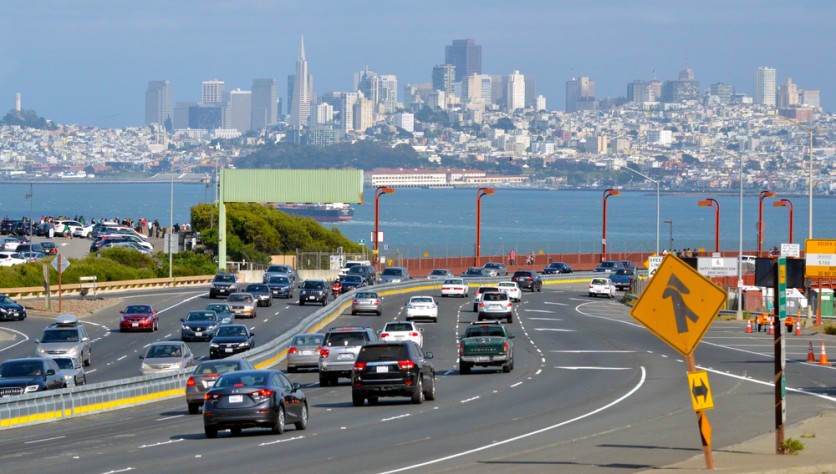
Car accidents are preventable tragedies, and every driver has a personal responsibility to drive safely to reduce the risk of an accident. But that said, even safe and sober drivers make mistakes or find themselves up against less-than-ideal road conditions. Think about how many car accidents in California could be prevented simply by eliminating driver error from the equation.
In 2021, roughly 57,726 police-reported motor vehicle accidents in California caused 4,285 fatalities that year. On average, California sees the most car accidents annually compared to every other state.
So how do you remove or lessen the impact of driver error? Technology is one powerful solution. Here are seven innovative technological solutions designed to help prevent car accidents.
1. Automatic emergency braking systems
Many car accidents are the result of a driver failing to notice an imminent collision. For example, many rear-end accidents occur when a driver doesn't realize the car in front of them is slowing or stopping.
Automatic emergency braking systems can prevent these types of accidents by detecting objects in front of your vehicle. These systems use sensors, cameras, or lasers to detect potential collisions and alert the driver with an audible beep or visual warning. If the driver doesn't react quickly enough, the system can then automatically apply the brakes if necessary to avoid a collision or lessen the impact.
2. Lane departure warning systems
Lane departure warning (LDW) systems use sensors to monitor a vehicle's position on the road and warn the driver if their vehicle starts drifting out of its lane (without using a turn signal). California accident attorney, Jeffrey Nadrich, of Nadrich & Cohen points out that "lane departure warning systems are a game changer for accident reduction and have the potential to prevent thousands of sideswipe accidents and to save lives."
Here's how lane departure warning systems typically work:
Sensors: Cameras or sensors mounted on the vehicle can detect lane markings on the road.
Data processing: The vehicle's computer processes sensor data and analyzes the vehicle's position relative to the lane markings.
Warning signals: If a vehicle starts drifting out of its lane, the LDW system usually automatically alerts the driver with a visual or audible warning.
Corrective action: Some LDW systems may also take corrective action - such as a light steering correction - to keep the vehicle centered in its lane.
3. Blind spot detection
Every driver should be aware of their vehicle's blind spots. But blind spot detection technology exists to help drivers detect other vehicles in their blind spots.
Blind spot detection technology uses sensors to monitor key blind spots and warn drivers when another vehicle is in their blind spot. This often takes the form of an icon that lights up on the vehicle's side mirror when a car is in its blind spot. This warns the driver not to switch lanes until the car has passed.
4. Adaptive headlights
Adaptive headlights go a step beyond traditional headlights by adjusting their direction and intensity based on the vehicle's speed, steering angle, and other factors. These adjustments help provide better visibility and reduce the risk of accidents at night.
5. Back-up cameras
Back-up cameras are one of the most popular technological safety features on modern vehicles. Having a back-up camera helps drivers see what's behind them to prevent accidents while driving in reverse.
A back-up camera system consists of a small camera installed on the back of the vehicle and a screen on the vehicle's dashboard that displays live footage from the camera when the car is put into reverse. Back-up cameras are particularly useful to drivers when parallel parking, backing out of parking spaces, and checking for pedestrians or bicyclists.
6. Driver monitoring systems
A driver monitoring system uses cameras and sensors to monitor a driver's behavior and alert them if they appear to be drowsy or distracted.
The system assesses various behaviors, such as:
Eye movements
Head position
Facial expressions
The vehicle's computer processes data from the sensors, analyzes the driver's behaviors, and flags any actions that could indicate drowsiness or distraction. From there, the system automatically alerts the driver or takes corrective action.
7. Intelligent speed adaptation
Intelligent speed adaptation (ISA) systems were designed to prevent speeding and slow down vehicles that are driving too fast. ISA technology uses GPS and mapping data to automatically adjust a vehicle's speed to match the speed limit and reduce the risk of a speeding-related accident.
There are three types of ISA systems:
Advisory ISA: These systems give the driver visual or audible feedback to encourage them to slow down. Feedback could be a warning signal, a message on the dashboard display, or a vibration in the gas pedal.
Voluntary ISA: Voluntary systems allow the driver to set a maximum speed limit, and the vehicle will automatically adjust its speed to stay within that limit. The driver can override the system at any time by pressing the gas pedal.
Mandatory ISA: Mandatory systems don't allow the driver to exceed the speed limit under any circumstances. The ISA system controls the vehicle's speed, which the driver can't override.
ⓒ 2025 TECHTIMES.com All rights reserved. Do not reproduce without permission.


![Best Gaming Mouse For Gamers With Smaller Hands [2025]](https://d.techtimes.com/en/full/461466/best-gaming-mouse-gamers-smaller-hands-2025.png?w=184&h=103&f=6fd057ef777bd39251d4e7e82e9b23f1)

